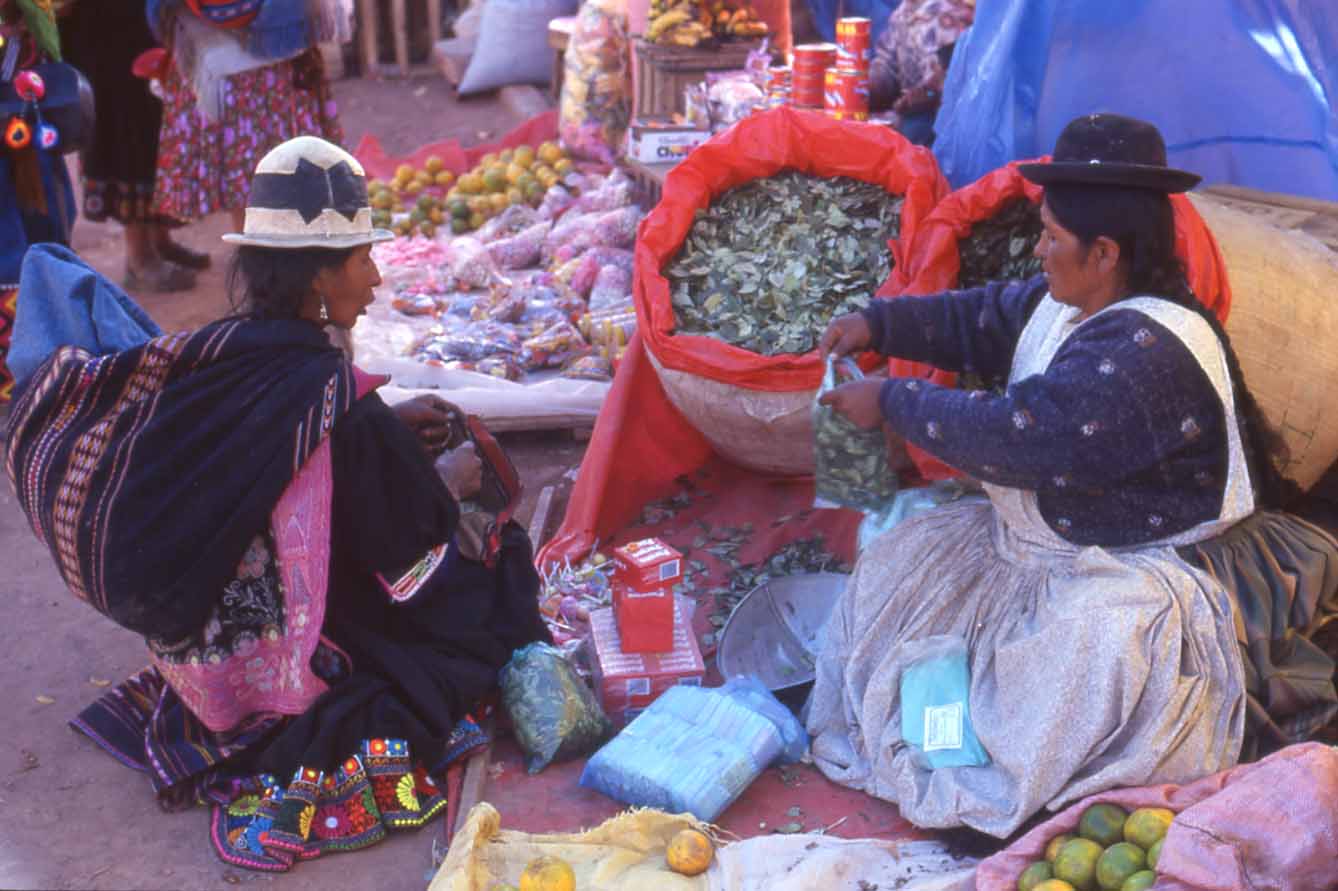Source: SAN FRANCISCO Chronicle Foreign Service
By Lola Almudevar
Sunday, October 7, 2007
Bolivia – Among the many brick buildings along a bleak plain in this
impoverished city, four brothers mix medicinal syrups and creams from
coca leaf, the raw ingredient of cocaine.
“It was the knowledge I took from my grandmother that made me see
coca’s commercial potential,” said Prudencio Ticona, general manager
of Ingacoca, a company that produces coca-derivative products. “I
remember standing at her side when she fractured her arm. She took
coca leaves and mixed them with herbs to make a dressing. She never
went to the doctor.”
Although the high-calcium, vitamin-rich coca has been chewed for
centuries in Bolivia to relieve altitude sickness, toothaches and
exhaustion, Ticona and his three brothers are commercializing the
leaf in products they claim treat rheumatism, diabetes, muscular
pains and asthma.
After nearly 20 years in business, Ingacoca eked out only $4,000 in
2006. But if Bolivia President Evo Morales has his way, the Ticona
brothers and others could find lucrative markets overseas. Morales
has long lobbied to overturn the 1961 U.N. Convention on Narcotics
that allows the industrialization of coca only for domestic use and
outlaws its production, manufacture and trade for export. The ban
places coca leaf in the same category as cocaine and heroin.
Morales envisions an international market for coca’s many legal
products used in Bolivia now, including toothpaste, tea, cosmetics,
gum, soft drinks, wine and even cookies. He has asked the European
Union to gauge the size of the legal coca market and Cuban scientists
to study the leaf’s pharmaceutical value.

Morales, a former coca farmer and union leader, hopes the EU study,
which will begin this month and end 18 months later, will vindicate
his decision to increase this year’s coca leaf production from 29,652
acres to 49,421 acres. Because there are thousands of Bolivian
farmers who make their living growing coca, he says commercializing
coca is a necessity.
“We were accused of being drug traffickers and cocaine dealers; we
put up with a lot, but … now we are defending coca,” Morales told
The Chronicle.
But the new policy worries U.S. officials, who argue Morales is
undermining Washington’s war on drugs. Bolivian coca production is
still well below its mid-1990s peak but has rebounded in recent
years. Bolivia remains the world’s third-largest producer of cocaine
after Colombia and Peru.
“Anyone who has worked in Latin America remembers the problems in
Bolivia in the ’80s when it was virtually a narco state. And no one
wants to see Bolivia return to that because it took years and years
to roll it back,” said Anne Patterson, U.S. assistant secretary for
international narcotics, at a press briefing in March.
The increasing influence of Venezuelan President Hugo Chavez is
another factor that worries U.S. policymakers. Chavez has financed
three factories that will produce coca tea and coca baking flour for
the Venezuelan market.
But the EU study is key. Even the Morales government concedes that it
will be forced to eradicate the added acreage if the report negates
coca’s commercial potential.
Morales has also shifted the war on drugs away from poor coca
farmers, whose crops were forcibly removed by soldiers. Between 1997
and 2006, there were 64 deaths and 840 injuries during past
eradication programs sponsored by U.S. aid.
Now, the emphasis is on drug traffickers and their laboratories,
chemicals and processing pits. In the primary coca growing area
called the Chapare, the government now allows farmers to grow coca on
one cato, or about one-third the size of a football field. To keep
farmers from going over the limit, the state offers economic
incentives and free medicines, threatens crop and land confiscation,
and exerts military pressure to seize cocaine and eradicate illegal
coca fields. The one cato, Morales claims, ensures farmers of a
steady income and has lessened violence against security forces. Only
two farmers have been killed – both outside the Chapare area – since
Morales assumed the presidency in January 2006.
“The Bolivian approach is not perfect, but it does present an
alternative,” said John Walsh, senior associate at the Washington
Office on Latin America. “They (coca farmers) are not being treated
as criminals but as people who want to make a legal living, and so
they are cooperating.”
But behind the public squabble, the United States and Bolivia have
found some common ground. Officials on both sides point to
significant improvement combatting drug trafficking. Bolivian police
seized 12 tons of cocaine in 2006 in contrast to just 3 tons in 2005,
approximately 26 percent more cocaine base and cocaine hydrochloride
than during the first nine months of 2005.
Last month, the State Department determined Bolivia has taken
adequate steps against the production and sale of cocaine to stave
off economic sanctions. Under U.S. law, countries that have
“demonstrably failed” in efforts to combat the spread of illicit
narcotics may be punished with cutoffs in aid. In 2007, U.S. aid to
Bolivia reached $90 million.
But the State Department report noted discrepancies between the
government’s stated anti-drug policies and tolerance of coca
production.
“We strongly encourage the government of Bolivia to make its No. 1
priority the reduction and eventual elimination of excess coca
crops,” it said. “We urge the government of Bolivia to revamp its
national drug control strategy to eliminate permissiveness in licit
production.”
In the meantime, some analysts say Morales should be concentrating
his efforts on convincing the United Nations to end the ban on legal
coca products. In a typical speech, he points to the ban’s exception
for Coca-Cola, which has long used the non-drug alkaloids in coca
leaf as a flavoring agent. The exemption rankles Morales.
“How is it that coca leaf is legal for Coca-Cola but
industrialization for Bolivia and the coca leaf itself are
penalized?” he said.
“Morales knows the coca issue well, but I don’t think he has
developed a lobbying strategy at the U.N. level and has been
surprised at how difficult it is, and how little understanding there
is of coca,” said Kathryn Ledebur, director of the Andean Information
Network, a nonprofit group that monitors drug operations in Bolivia.
“Developing an effective lobby strategy should be a key objective.”
Meanwhile, Prudencio Ticona is hoping the ban will eventually be
overturned so he can expand his business, which now has only 10
employees.
“Coca in its natural state is good for your health,” he said. “It is
a long way from the chemical form of cocaine.”





 Creative Commons Attribution
Creative Commons Attribution